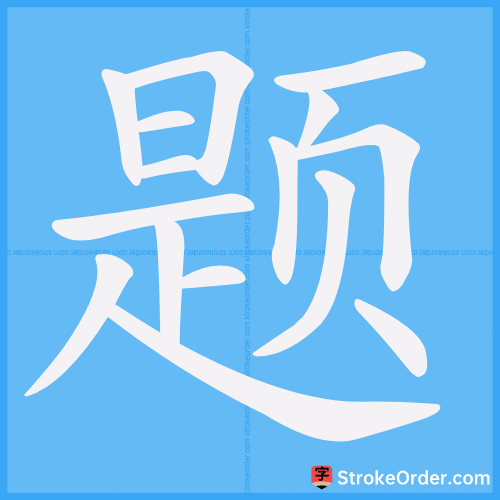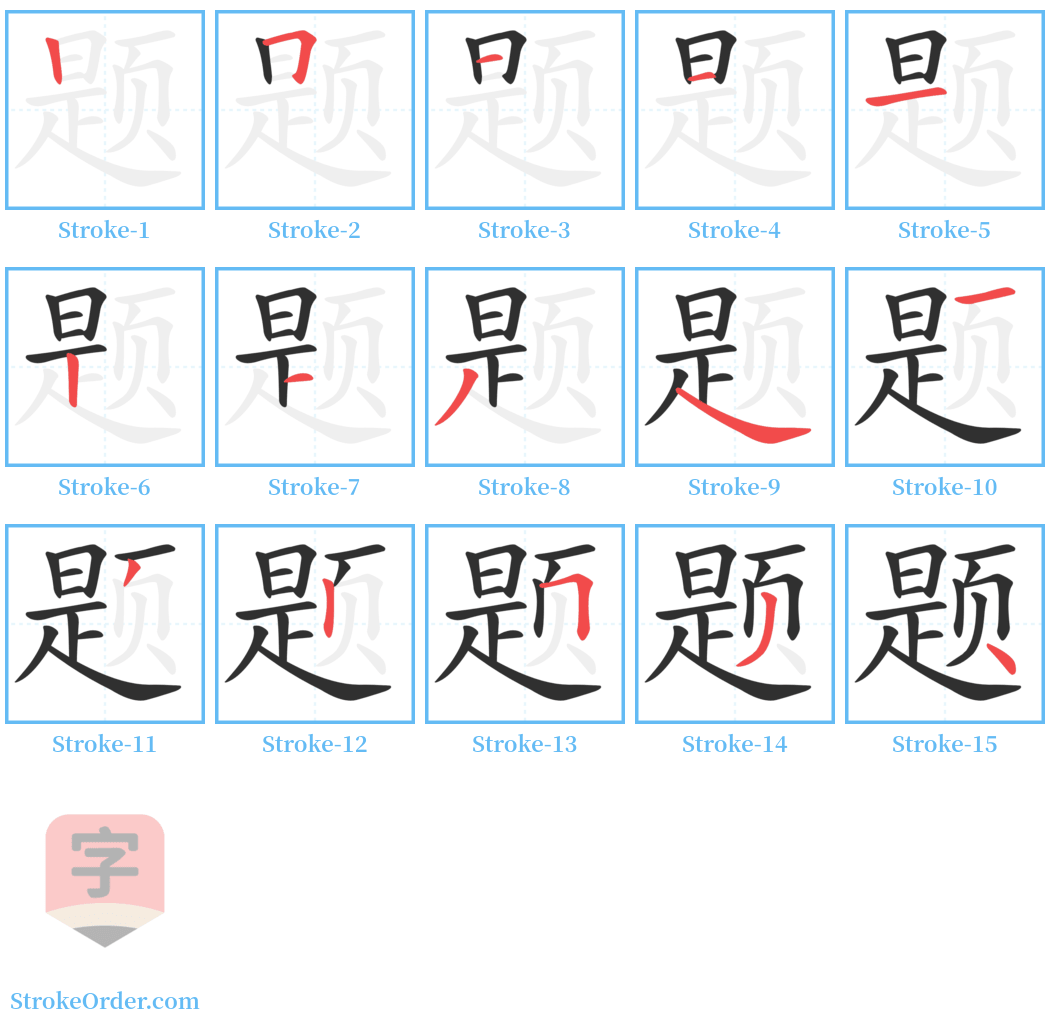题 Stroke Order
Animated Stroke Order of 题

Stroke Order Diagrams for 题

Step-by-Step Handwriting Guide for 题

Learn to Write Chinese Characters with Video Tutorials
Watch the video of writing the Chinese character "题", learn the correct stroke order (笔顺) of the character "题", and master the standard way of writing the character "题".
Free Printable Handwriting Practice with Stroke Order: 题
Printable Writing Practice Worksheet of "题" in Portrait Orientation (Tian Zi Ge)

Printable Writing Practice Worksheet of "题" in Landscape Orientation (Tian Zi Ge)

Information of 题
Pinyin
tí
Radical
页
Strokes
15 strokes
Usage
★★★★★
Definition
topic / subject / to inscribe / to superscribe
题 tí
名词 (Noun)
1. 写作或讲演内容的总名目:
Title or name of the content of a writing or speech.
Examples:
题目 (title of a work), 主题 (main topic), 话题 (topic of conversation), 题材 (subject matter), 题旨 (purpose of the title).
2. 练习或考试时要求解答的问题:
Question that needs to be answered in exercises or exams.
Examples:
试题 (exam question), 问答题 (question and answer type).
3. 写上,签署:
To write or sign.
Examples:
题名 (sign one's name), 题字 (inscribe), 题壁 (inscribe on the wall), 题诗 (write a poem).
4. 姓:
A surname (family name).
动词 (Verb)
1. 书写;题署:
To inscribe or write.
Examples:
题赞 (to write remarks on a painting), 题款 (signature on artwork), 题诗 (to compose a poem).
2. 谈及:
To mention.
Examples:
题说 (to bring up a topic).
3. 品评;评论:
To review or critique.
Examples:
题评 (to evaluate or review).
4. 鸣;叫:
To cry out or shout.
Examples:
题经子杜鹃 (the cuckoo cries).
**Root meaning:** 原义: 额头 (Forehead), derived from the structure that indicates a head, suggesting the front or top part of something.
**Additional context:**
- 物品的前端或顶端:
Front or top of an object.
Example:
榱题 (end of a beam).
- 标志:
A mark or label.
- 奏章:
Memorial or official document sent to a ruler or authority, particularly used during the Ming and Qing dynasties.
Examples of usages in administration include:
- 题参 (to consider or review),
- 题本 (a memorial sent up),
- 题奏 (to report upon).
specific topic (addressed by a book, lecture, TV program etc) / article, report or program etc on a specific topic
Input Method for 题
Pinyin
ti2
Wubi
jghm
Cangjie
aombo
Zhengma
kaig
Four Corner
61808
Unicode
U+9898
Same Pronunciation Characters